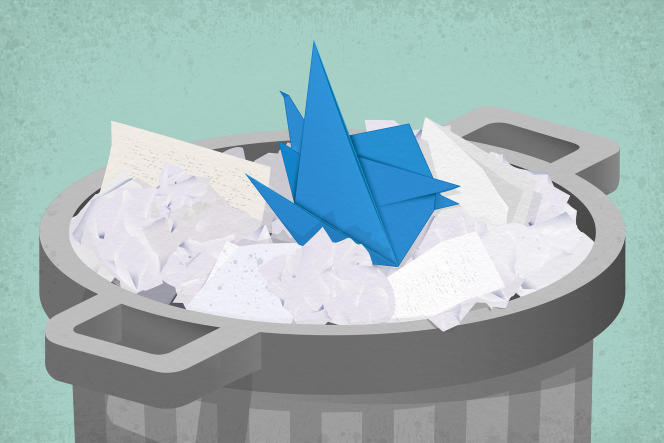Five CEOs and four chairmen of the board of directors in sixteen years, a chronic deficit and a host of troubles with regulators, governments, advertisers and its own users: for 44 billion dollars (39.7 billion euros), we have already seen a better deal. When Elon Musk buys Twitter in October 2022, the multi-billionaire claims that he will not only raise the bar economically, but that he also intends to make it a great social network again, on which reigns freedom of expression, with funny things and interesting people.
Nine months later, the result is quite different: despite drastic savings plans and a forced transition to a paid model, in which free users only have access to a degraded service, the company remains on the verge of bankruptcy. The social network seems caught in a permanent chaos, according to the announcements of new functionalities, changes of rules and technical problems. So much so that the influence of the platform now seems threatened by the launch, on July 5, of Threads, a clone developed by Meta, which has accumulated more than 100 million registrations in a few days.
Is Twitter doomed to disappear? Yes, at least in its current form. The platform symbolically changed its logo on Monday July 24, with the letter “X” replacing the famous blue bird. The day before, Elon Musk had warned that it would be necessary “soon to say goodbye to the Twitter brand”suggesting that the social network could at the same time turn into an “X” – the nebula “universal app” that he promises since the takeover. It is the end of a certain Twitter which seems to have been recorded, that of a social network which, for fifteen years, has fascinated and sometimes obsessed its users, including many politicians, journalists and public figures.
For all these years, however, Twitter has thrived in chaos, without ever being profitable. When the service launched in 2006, it was designed to work with SMS – 140 characters maximum to answer the question “what are you doing?” “. In practice, Twitter is especially acclaimed by the first generation of American iPhone owners, who detail their daily lives there, then, very quickly, use it to share links, discuss current events or shout at each other in public. All in a “news feed” without hierarchy, entirely chronological, and in which we can say everything.
You have 75.06% of this article left to read. The following is for subscribers only.
